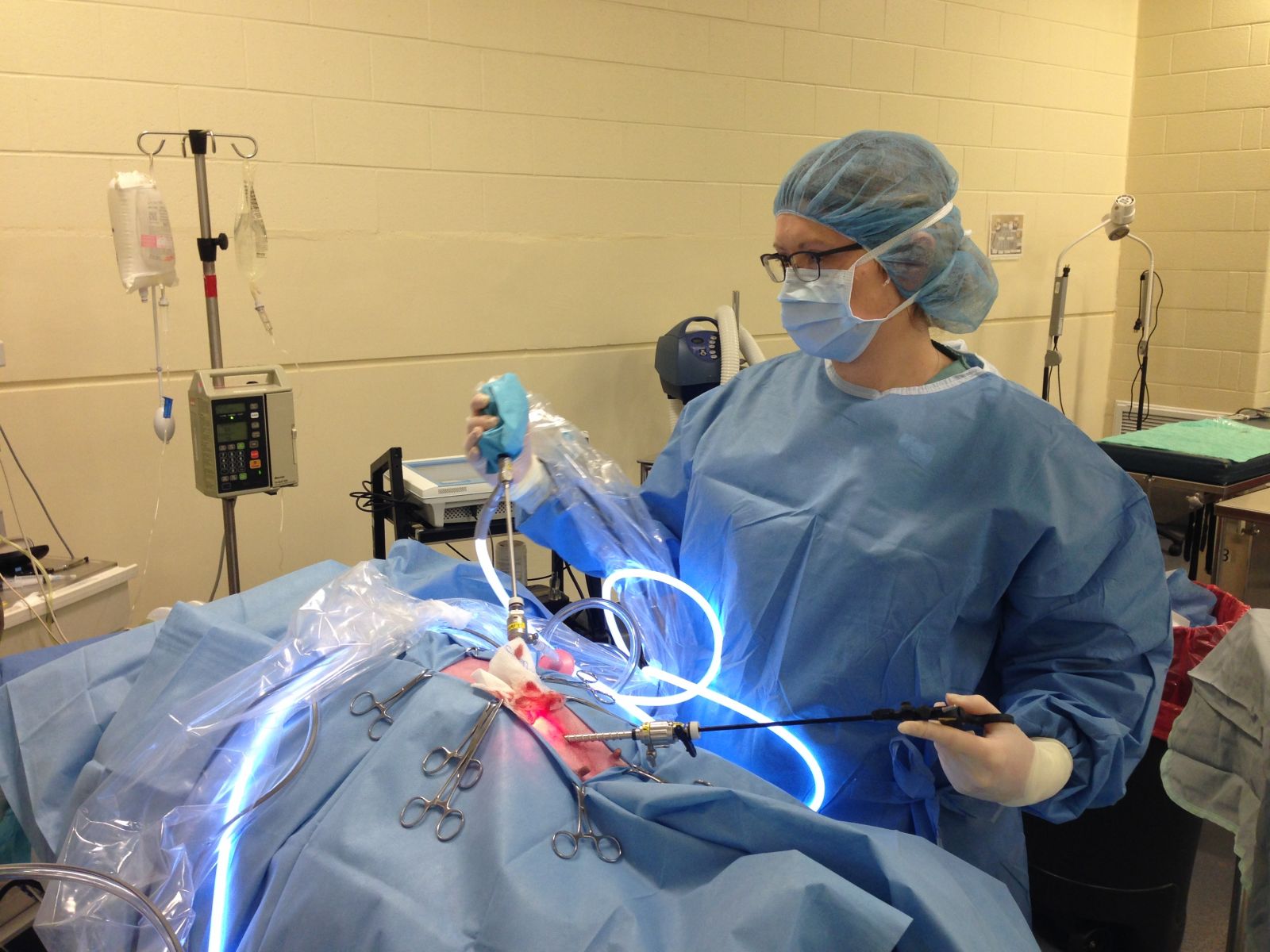First ever veterinary research of its kind in dogs
OVC Pet Trust-funded research is underway at the Ontario Veterinary College (OVC) that is the first of its kind in canine populations in the world. Dr. Ameet Singh, Assistant Professor of Small Animal Surgery in the Department of Clinical Studies at the University of Guelph’s OVC, is leading the research to investigate the use of warmed and humidified carbon dioxide during laparoscopy, also known as minimally invasive surgery of the abdomen. Benefits, which have already been demonstrated in human medicine, include reduced pain following surgery, decrease in the use of post-operative pain medication and reduced hypothermia in patients.
.jpg)
In order to visualize abdominal organs and create a working space to manipulate instruments, carbon dioxide is pumped into the abdomen to expand it. Traditionally, the carbon dioxide used is room temperature and dry, with zero per cent relative humidity. Common laparoscopic procedures in dogs include removal of the gall bladder adrenal gland and spleen, biopsy of various abdominal organs such as the liver, kidney and gastrointestinal tract and gastropexy. Gastropexy prevents gastric dilatation and volvulus (GDV), a condition commonly affecting tall, deep chested dogs when the stomach twists inside the body resulting in a life-threatening scenario.
“Many human hospitals are using warmed (up to 37 degrees Celsius) and humidified (95 per cent relative humidity) carbon dioxide during laparoscopic surgery, which has resulted in increased benefits for the patient,” Singh says. “The positive results in human medicine have inspired our team to investigate its effects in dogs. Depending on the outcomes of our research, we could potentially use it for laparoscopic procedures in dogs.”
While this is the first investigation of into the use of warmed carbon dioxide in veterinary medicine and focuses on dogs, Singh says their findings could potentially be applied to any animal that undergoes laparoscopy.

Avoiding major abdominal or thoracic surgical approaches translates into faster recovery time for both humans and animals. OVC Pet Trust’s $9-million campaign to create new surgery and anesthesia facilities will include the only dedicated suite for minimally invasive procedures at a veterinary teaching hospital in Canada, which will allow Singh and his team to provide the best clinical care to pets while continuing their quest to advance minimally invasive surgical options.
“The new facilities will provide increased space and superior, more advanced equipment to perform surgery,” says Singh. “Ultimately, it will lead to better care for our patients.”
Singh’s team for this project includes Doctor of Veterinary Science student and surgery resident Jacqueline Scott, Dr. Alex Valverde (board certified anesthesiologist), Dr. Shauna Blois (board certified internal medicine specialist) and Jessica Kilkenny (Master of Science candidate in Clinical Studies). While research is currently in its early stages, Singh is hopeful data analysis and positive results will lead to a clinical trial in the near future.
Follow Dr. Singh’s team on Twitter @OVCSinghLab
Want to learn more? WATCH surgical videos of Singh's team in action! (NOTE: Some of the videos below contain graphic content. Viewer discretion is advised)

